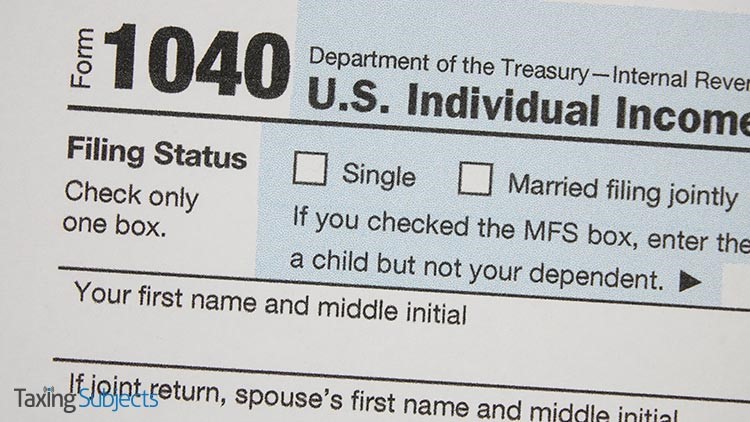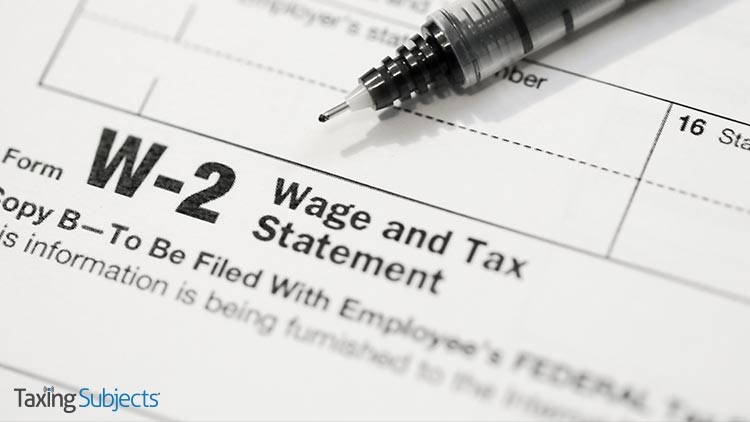by MEA Tax Advisors | Dec 11, 2020 | Tax Tips and News
The tax-filing season will be upon us before we know it, so the Internal Revenue Service is urging taxpayers to take actions now to help ensure they can file timely and accurate returns in 2021.
Things to consider
The IRS says there are some areas that taxpayers should give extra attention before filing. These topics include credits, deductions and refunds:
Recovery Rebate Credit/Economic Impact Payment. Taxpayers who received an Economic Impact Payment, should keep Notice 1444, Your Economic Impact Payment, with their 2020 tax records. They may be eligible to claim the Recovery Rebate Credit on their tax year 2020 federal income tax return if:
- they didn’t receive an Economic Impact Payment, or
- their Economic Impact Payment was less than $1,200 ($2,400 if married filing jointly for 2019 or 2018), plus $500 for each qualifying child they had in 2020.
If a taxpayer didn’t receive the full amount of the Economic Impact Payment for which they were eligible, they may be able to claim the Recovery Rebate Credit when they file in 2021. Individuals don’t need to complete information about the Recovery Rebate Credit on tax year 2020 Form 1040 or 1040-SR when filing in 2021, unless they’re eligible to claim an additional credit amount.
Interest on refunds is taxable. Taxpayers who got a federal tax refund in 2020 may have been paid interest. Refund interest payments are taxable and must be reported on federal income tax returns. In January 2021, the IRS will send Form 1099-INT to anyone who received interest totaling $10 or more.
Charitable deduction changes. New this year, taxpayers who don’t itemize deductions may be able to take a charitable deduction of up to $300 for cash contributions made in 2020 to qualifying organizations. For more information, read Publication 526, Charitable Contributions.
Refunds. The IRS always cautions taxpayers and tax pros alike that they shouldn’t rely on getting a refund by a certain date, especially when making big purchases or paying bills. Some returns might require additional review and so processing might take longer.
For example, the IRS and its partners in the tax industry continue to strengthen the security review process in an effort to help protect against identity theft and refund fraud.
Just like last year, refunds for returns claiming the Earned Income Tax Credit or Additional Child Tax Credit cannot be issued before the middle of February. This applies to the entire refund – including the portion not associated with these credits.
Get more information on steps taxpayers can take ahead of filing season at a special web page on IRS.gov. Other helpful resources include Publication 5348, Get Ready to File, and Publication 5349, Year-Round Tax Planning is for Everyone.
Source: IR-2020-272
– Story provided by TaxingSubjects.com
by MEA Tax Advisors | Dec 8, 2020 | Tax Tips and News
The Internal Revenue Service is giving employers a friendly nudge to remind them that their Forms W-2 and other wage statements have to be filed by Feb. 1, 2021, to avoid penalties.
Making the deadline will also help the IRS prevent fraud.
A 2015 law made Jan. 31 the permanent deadline to file copies of Form W-2, Wage and Tax Statements, and Form W-3, Transmittal of Wage and Tax Statements, with the Social Security Administration.
The calendar for the upcoming tax season, however, shows Jan. 31 is a Sunday, pushing the due date to the next business day: Monday, Feb. 1.
Certain Forms 1099-MISC, Miscellaneous Income and Forms 1099-NEC, Non-Employee Compensation, are also normally due to taxpayers by Jan. 31. However, this tax season that too has been pushed back to the next business day on Feb. 1.
Various other due dates related to Form 1099-MISC, including due dates to the IRS, can be found in the instructions on IRS.gov.
The normal January filing date for wage statements means the IRS can more easily detect refund fraud, with more time to verify the income that taxpayers report on their tax returns. Employers can help support that process—and avoid penalties—by filing the forms on time and without errors.
Start early for the best results
Good preparation now can help businesses avoid problems later. For example, employers can get an early start verifying or updating employee information such as names, addresses and Social Security numbers or individual Taxpayer Identification Numbers.
In addition, company administrators should ensure their firm’s account information is current and active with the Social Security Administration before January, and should order paper Forms W-2 early if needed.
Automatic extensions of time to file Forms W-2 are not available.
The IRS will only grant extensions for very specific reasons. The instructions for Form 8809, Application for Time to File Information Returns have details.
For more information, read the instructions for Forms W-2 and W-3 and the Information Return Penalties page on IRS.gov.
Source: IR-2020-269
– Story provided by TaxingSubjects.com
by MEA Tax Advisors | Dec 4, 2020 | Tax Tips and News
Businesses should be on high alert as thieves try to use their stolen names and data to file fraudulent income tax returns. The warning comes from the Internal Revenue Service, state tax agencies and tax industry partners who make up the Security Summit partnership.
The alert marks the fourth day of National Tax Security Awareness Week, and gives businesses a heads-up to protect both data and systems.
The IRS is also planning additional steps to help businesses fight cybercriminals trying to steal their data.
“As the IRS and our partners have strengthened our security standards, identity thieves have looked for new ways to find sources of information, and businesses need to stay alert,” said IRS Commissioner Charles Rettig. “Businesses, just like individuals, can be victims of identity theft. Thieves may steal enough information to file a business tax return for refund or use other scams using the company’s identity.”
Small Business faces a big threat.
Statistics show more than 70% of all cyberattacks are aimed at businesses with 100 or fewer employees. The thieves may target credit card information, the business’ identity information or employee identity information.
The Federal Trade Commission (FTC) encourages businesses to follow their best practices. These include:
- Set your security software to update automatically
- Back up important files
- Require strong passwords for all devices
- Encrypt devices
- Use multi-factor authentication
More information can be obtained at the FTC’s Cybersecurity for Small Businesses site.
Businesses should be especially alert to any COVID-19 or tax-related phishing email scams that attempt to trick employees into opening embedded links or attachments. IRS-related scams can be sent to [email protected].
The IRS is building defenses.
Starting Dec. 13, 2020, the IRS will begin masking sensitive information from business tax transcripts as well as the summary of corporate tax returns, in an effort to block thieves from stealing identifiable information that would allow them to file fake business tax returns.
Only financial entries, the IRS says, will be fully visible. All other information will have varying masking rules.
For example, only the first four letters of each first and last name—of individuals and businesses alike—will be displayed. Only the last four digits of the Employer Identification Number (EIN) will be visible.
The IRS also has launched the Form 14039-B, Business Identity Theft Affidavit, allowing companies to report possible identity theft to the IRS when, for example, the e-filed tax return is rejected.
Businesses should file Form 14039-B if they receive a:
- Rejection notice for an electronically filed return because a return already is on file for that same period.
- Notice about a tax return that the entity didn’t file.
- Notice about Forms W-2 filed with the Social Security Administration that the entity didn’t file.
- Notice of a balance due that is not owed.
The form enables the IRS to respond to the business much faster than in the past and to work to resolve issues that are created by a fraudulent tax form. However, businesses should not use Form 14039-B if they experience a data breach but don’t find a tax-related impact. Check out Identity Theft Central and its Business section.
The W-2 scam is still alive and well.
Tax scams can come and go, but Form W-2 theft schemes seem to be a constant threat. The most common version has a thief pose as a high-ranking company executive who emails payroll department employees and asks for a list of workers and their W-2s. Many times, businesses don’t even know they’ve been scammed until a fraudulent return shows up in employees’ names.
The IRS has special reporting procedure for employers who are hit by the W-2 scam. It also can be found at Identity Theft Central’s Business Section.
Security Summit partners also urge businesses to keep their EIN application information current. A change of address or responsible party can be reported using Form 8822-B.
Remember that a change in the responsible party has to be reported to the IRS within 60 days.
Current information can help the IRS find a point of contact quickly to resolve identity theft and other issues.
For more information about this week-long series and the effort to raise awareness about identity theft, check out IRS.gov/securitysummit on the IRS website.
Source: IR-2020-268
– Story provided by TaxingSubjects.com
by MEA Tax Advisors | Dec 3, 2020 | Tax Tips and News
Taxpayers who want to make it harder for identity thieves to successfully file a fraudulent tax return using their information will soon be able to sign up for an IP PIN. Starting in January 2021, the Internal Revenue Service says it will allow any taxpayer to sign up for the Identity Protection PIN Opt-In Program—provided they can “properly verify their identities.”
This announcement comes on the third day of National Tax Security Awareness Week, an educational outreach event designed to help taxpayers and tax professionals protect their private data from criminals. Previously, the only way to get an IP PIN was to participate in the pilot version of the Identity Protection PIN Opt-In Program or for the IRS to confirm you had been the victim of identity theft.
What is an IP PIN?
According to the IRS, an IP PIN “is a six-digit number assigned to eligible taxpayers to help prevent the misuse of their Social Security number on fraudulent federal income tax returns.” Once you register for an IP PIN, the IRS will only accept your tax return if it lists this new identification number—making it much harder for identity thieves commit identity theft tax refund fraud using your information.
How do I register for the Identity Protection PIN Opt-In Program?
To sign up for an IP PIN, use the Get An IP PIN tool located on IRS.gov. While this separate identification number can help taxpayers protect their identities, the IRS notes that applicants who use the online tool “must pass a rigorous authentication process … that uses Secure Access authentication.” (Learn more about Secure Access at IRS.gov/SecureAccess.)
The IRS says that taxpayers should review the following information before submitting an IP PIN application:
- The Get an IP PIN tool will be available in mid-January. This is the preferred method of obtaining an IP PIN and the only one that immediately reveals the PIN to the taxpayer.
- Taxpayers who want to voluntarily opt into the IP PIN program do not need to file a Form 14039, Identity Theft Affidavit.
- The IP PIN is valid for one year. Each January, the taxpayer must obtain a newly generated IP PIN.
- The IP PIN must be properly entered on electronic and paper tax returns to avoid rejections and delays.
- Taxpayers with either a Social Security number or Individual Tax Identification Number who can verify their identities are eligible for the opt-in program.
- Any primary taxpayer (listed first on the return), secondary taxpayer (listed second on the return) or dependent may obtain an IP PIN if they can pass the identity proofing requirements.
- The IRS plans to offer an opt out feature to the IP PIN program in 2022 if taxpayers find it is not right for them.
Luckily, there are options for IP PIN applicants who can’t complete the online identity verification process.
“Taxpayers with incomes of $72,000 or less and with access to a telephone should complete Form 15227 and mail or fax it to the IRS,” the IRS explains. “An IRS assistor will call the taxpayer to verify their identity with a series of questions. For additional security reasons, taxpayers who pass authentication will receive an IP PIN the following tax year.”
Note: While the program is being expanded to include voluntary IP PIN requests, confirmed victims of identity theft are still eligible to receive an IP PIN at no charge after filing Form 14039.
Source: IR-2020-267
– Story provided by TaxingSubjects.com




